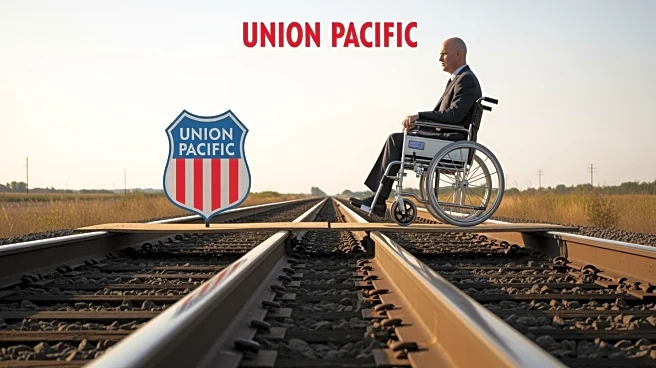What's Happening?
A U.S. District Court for the District of Oregon has delivered a historic verdict against Union Pacific Railroad Co., finding the company guilty of disability discrimination under the Americans with Disabilities
Act (ADA) and Oregon's state law. The case involved a train conductor who was denied return to work after a shoulder injury, despite medical clearance. Union Pacific's '1% rule' prohibited employees from safety-sensitive jobs if there was a 1% chance of sudden incapacitation. The jury awarded the conductor $952,863 in back and front pay, $1 million in noneconomic damages, and $25 million in punitive damages.
Why It's Important?
This verdict sets a significant precedent for employers regarding disability discrimination and the application of return-to-work policies. The court's decision emphasizes the importance of individualized assessments over blanket policies that may disproportionately impact disabled employees. The substantial punitive damages highlight the legal risks companies face when failing to comply with ADA requirements. Employers across the U.S. may need to reassess their policies to avoid similar lawsuits and ensure compliance with federal and state disability laws.
What's Next?
Union Pacific may appeal the decision, potentially leading to further legal scrutiny and discussions on the ADA's application in workplace policies. Employers are likely to review their return-to-work policies to mitigate risks of discrimination claims. The case could prompt legislative or regulatory changes to clarify the scope of ADA protections and the limits of punitive damages in discrimination cases.
Beyond the Headlines
The case raises broader questions about corporate responsibility and the balance between safety concerns and employee rights. It may influence public perception of disability rights and encourage advocacy groups to push for stronger protections. The verdict could also impact how companies approach risk management and employee evaluations, fostering a more inclusive workplace culture.













